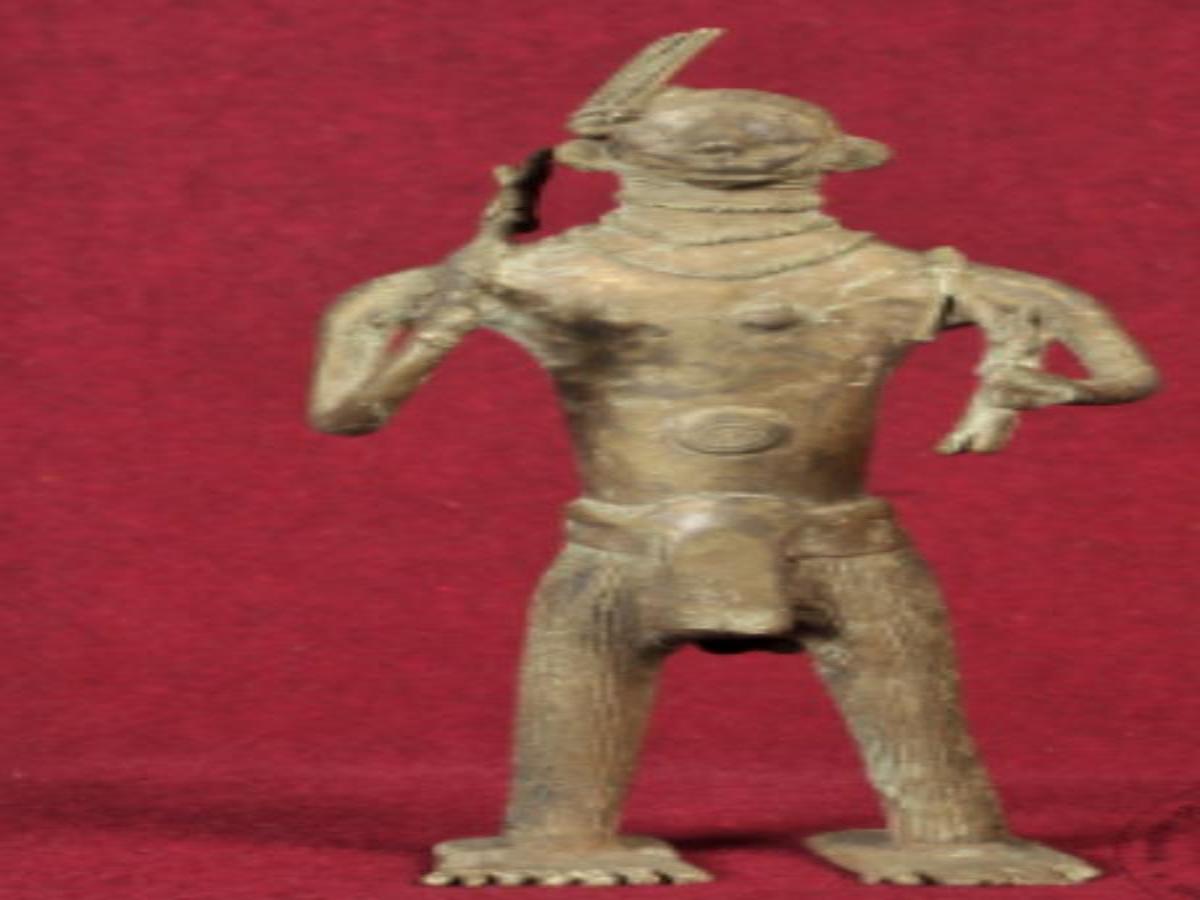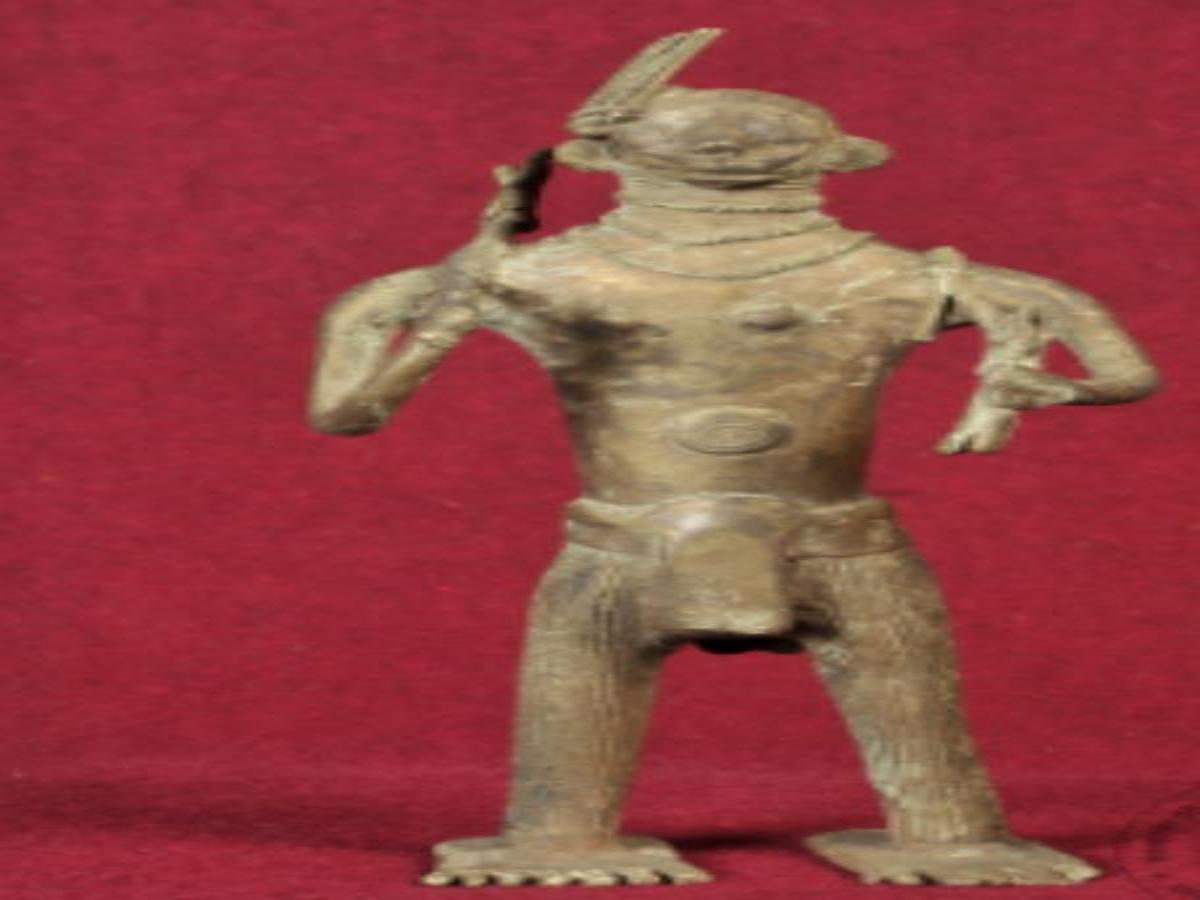State
Tribe Name
Art Type
short description
The figure of a man, developed in conjunction with the Gunsur Malias tribe, represents tribal identity, power, and skill to the extreme. Standing in an erect postured manner, this figure makes its commanding presence felt. On the head is a prominently placed comb, which could signify a status, tradition of personal grooming, or ceremonial relevance of the individual within the tribe. The facial feature includes also striking moustaches, heightening the masculine and warrior-like impression. This tribal figure is poised for battle, with a battleaxe attached to his right hand—symbolizing bravery and protection—and holding a bow and arrows in his left, inherited from tradition for use for hunting as well as in warfare.
Thumbnail

Filter Postion
Left
Filter Background
Off
Theme
Filter Header Image

content
Image

description
The figure of a man, developed in conjunction with the Gunsur Malias tribe, represents tribal identity, power, and skill to the extreme. Standing in an erect postured manner, this figure makes its commanding presence felt. On the head is a prominently placed comb, which could signify a status, tradition of personal grooming, or ceremonial relevance of the individual within the tribe. The facial feature includes also striking moustaches, heightening the masculine and warrior-like impression. This tribal figure is poised for battle, with a battleaxe attached to his right hand—symbolizing bravery and protection—and holding a bow and arrows in his left, inherited from tradition for use for hunting as well as in warfare.
These testify to the fact that tribal men are expected to fulfill dual roles—to be providers and protectors. The action depicts life and culture among the Gunsur Malias, who value nature and cherish their warrior tradition. The sculpture is vital evidence of how proficient the tribe has become in metalwork because it must have been executed through the much-acclaimed lost-wax casting process. This allows the capture of details and durability over time, since what once happened to the figure remains true to the same form and story. Every feature, including the textured weapons and ornamentation on the headpiece, glorifies the cultural values and artisanal brilliance of the Gunsur Malias community.
These artifacts are not merely artistic objects; they are pictorial histories of tribal history, spirituality, and social roles preserved through generations of craftsmanship.
These testify to the fact that tribal men are expected to fulfill dual roles—to be providers and protectors. The action depicts life and culture among the Gunsur Malias, who value nature and cherish their warrior tradition. The sculpture is vital evidence of how proficient the tribe has become in metalwork because it must have been executed through the much-acclaimed lost-wax casting process. This allows the capture of details and durability over time, since what once happened to the figure remains true to the same form and story. Every feature, including the textured weapons and ornamentation on the headpiece, glorifies the cultural values and artisanal brilliance of the Gunsur Malias community.
These artifacts are not merely artistic objects; they are pictorial histories of tribal history, spirituality, and social roles preserved through generations of craftsmanship.
Image Mode
landscape
promoted
On
Verified
Off
